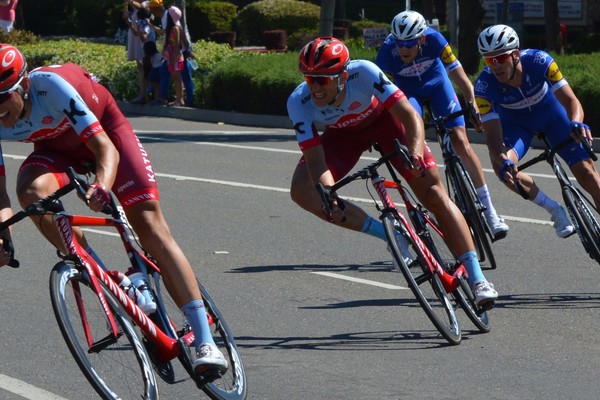
Drafting is a skill that’s learned over time and with practice, but the basics are simple - at first, stay about 2 feet from the rear wheel of the rider in front of you. Keep your head up and, rather than looking at the rider’s wheel or hub, look ahead of the rider and get a feel for where your bike is in relation to theirs. Stay relaxed. Keep your hands near the brakes. Try to avoid using the brakes to keep from running into the wheel in front. Rather, gently drift to the left (or the right if you’re in a country that drives on the left) out of the draft of the rider in front, and catch a bit of wind on your chest. When you’re as far behind the rider leading you as you want to be, gently drift back into line.
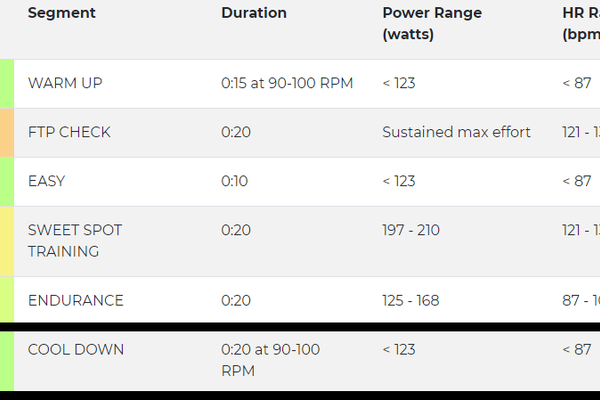
It is common knowledge that cooling down after a training ride or cycling event is a best practice. However, time crunched cycling athletes often skip the cool down. We get it. You have a busy schedule and are trying to fit training into a tsunami of work, family, social and life appointments. However, skipping the cool down is not a good idea. Why? What are the consequences if you don’t cool down?
The purpose of the cool down is to slowly bring your heart rate, respiration and body temperature back to normal and spin excess metabolic waste products out of your muscles. Cooling down helps you recover from training more quickly. It also helps you avoid dizziness and reduce the amount of blood pooling in your major muscle groups. The harder the workout, the more important it is to cool down.
Think of it like this; if your body is a car traveling at 50 miles per hour, what is more comfortable as you approach a stop sign? You can slam on the brakes with a few feet to go and skid to a jarring stop and experience whiplash, or you can gradually apply the brakes well in advance and come to a gentle stop, ready to hit the accelerator again.
We all have romantic images of the runner or rider giving it their all, crossing the finish line and then collapsing into a heap completely exhausted as a kind volunteer wraps them in a space blanket. The reality is quite different. Not cooling down properly after a hard workout can give you flu like symptoms including fever, chills and nausea! That’s why you see cyclists like Chris Froome riding a trainer after winning a Stage of the Tour De France as he waits for the podium ceremony.
What is the best way to cool down for cycling? According to coach Kadir, you should pedal at a high cadence of 80-90 RPM in a low gear that is very easy to spin. You should do this for 10-15 minutes. Older athletes generally need a little longer to cool down. This technique gently decreases your heart rate, respiration and temperature. Also, it has been shown that spinning is a low gear is the most efficient way to clear metabolic waste products from your muscles. All VeloPro dynamic and personalized workouts include a cool down interval.
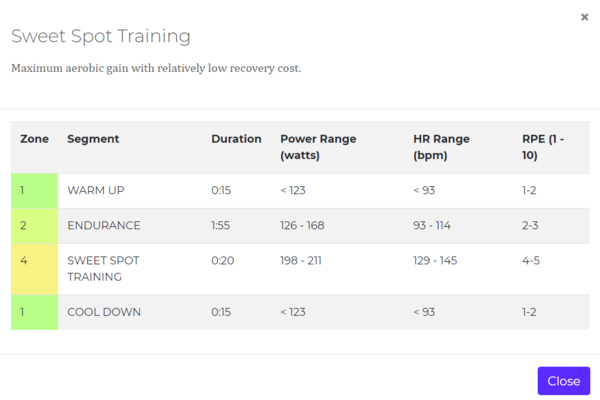
It is common knowledge that warming up before training or cycling in an event is a best practice. However, for a time crunched cycling athlete it is tempting to skip it and get right to pounding the pedals. This is not a good idea. Why? What are the consequences if you don’t warm up?
The why should be obvious. You need to elevate your body temperature and increase blood flow and oxygen to your muscles. This helps prepare you for more strenuous activity and has been shown to improve performance. If you do not warm up, you greatly increase your odds of injury. Also, if you start too quickly without warming up you can burn your available energy stores and be left without the reserves you need for longer endurance efforts. For example, sprinting or taking on a huge climb at the beginning of a ride without a proper warmup can decrease your performance and even send you on an early trip to bonktown!
What is the best way to warm up for cycling? According to coach Kadir, you should pedal at a high cadence of 80-90 RPM in a low gear that is very easy to spin. You should do this for 10-15 minutes. Older athletes generally need a little longer to warm up. This technique gently increases your heart rate, heats up your muscles, tendons and ligaments and primes your metabolism for efficient oxygen and energy processing. All VeloPro dynamic and personalized workouts include a warmup interval. If you are racing or riding in a competitive event, the chaos of traveling, registering and making it to the starting line can nix your warmup plans. Do not make this mistake. Therefore, you see the most experienced athletes arrive early and pedal on their fold up trainers.
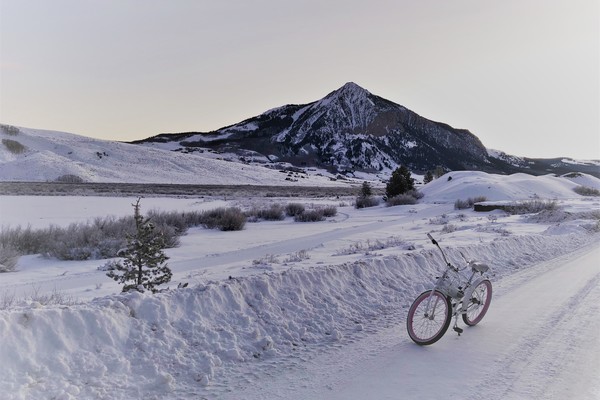
First, for safety, we first recommend that you ride an indoor trainer. If you don’t have a trainer, it is okay to do other indoor cardio activities like treadmill, elliptical, rowing machine or stair-climber.
However, we also know that riding in the snow can be peaceful and magical! If you are adventurous, confident in your bike-handling skills, and find a safe route without traffic, please consider the following snow cycling tips:
Big thanks to Dangerous Dave Anolik for his photo and snow cycling tips!
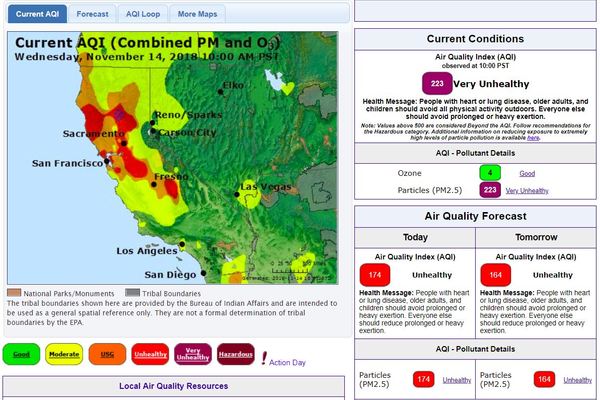
Virtually every day we see the effects of Climate Change. Millenia-old icebergs come apart, hurricanes and typhoons become more destructive, and forest fires more common. For athletes, the most readily felt effect of all this is on the quality of the air we breathe.
Exercising in dirty air is never a good idea. But what constitutes dirty air? The US Environmental Protection Agency uses a 0-300 scale called Air Quality Index (AQI). AQI considers measurements of ozone, large and small particulates, sulfur dioxide, and carbon monoxide, so it’s a good indicator of when and when not to train outdoors and, perhaps more importantly, how hard to train, or not. It’s important to note here that, for endurance athletes, the pollutants to really watch out for are small particle pollutants – those classified as PM2.5 – that easily enter the bloodstream through one’s lungs. PM2.5s are commonly produced by vehicles, industry, dust storms, and forest fires. The latter are increasingly common on the US west coast, once the standard bearer for clean air.
For healthy individuals, with no respiratory issues like asthma, sinusitis, or significant pollen allergies, hard exercise (defined as Level 3 or higher – that which, for most people, means breathing through the mouth as well as the nose, thereby bypassing the nasal passages’ natural filters) exercising with AQI levels above 150 is not recommended. In this case, it’s better to either do your workout indoors, or just do an easier one if you really must get outside. For levels above 150, the best option is to simply take the day off.
For our U.S. riders, you can find your local AQI at the Environmental Protection Agency’s AirNow Website. Look at the top of the page. You can select your area by zip code or state.
For our European riders, you can find your local European Environment Agency’s Air Quality Site. Look at the bottom of the page. You can select your country for more details.
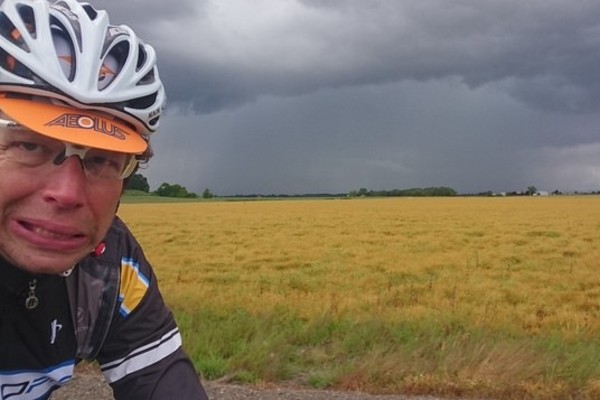
Winter is coming! Here's a quick checklist to prepare your wolf...er...bike for winter riding.
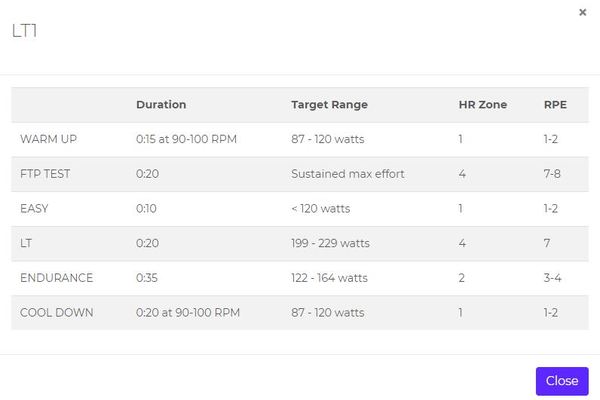
Functional Threshold Power, or FTP, is an objective scientific measure of cycling performance. FTP is simply the average maximum power, measured in watts, that you can maintain for a 60-minute period. This gives you a good idea of your cycling strength and fitness. FTP is a great way to see if your training is helping you to improve over time. You can also compare your FTP with riders of all levels.
At VeloPro, we use the 20-minute method to derive your FTP. This method helps encourage you to test regularly while avoiding injury. FTP is best checked every 2-3 weeks after a build period in your training workouts. The actual test is best administered as part of a normal training ride. To take the test, at the beginning of your ride, first complete a normal warm up. Next, ride for 20-minutes at maximum effort. Think of it as a mini time trial. The most accurate FTP measurements come from using a power meter connected to your cycling computer. If you do not have a power meter, VeloPro can estimate your output in watts from other ride data.
Here are 5 Keys to having a great FTP test:
VeloPro makes it simple and easy to measure your FTP and train for your next cycling event. Road, Mountain and Cyclocross, we have you covered. Sign up for a free trial today.
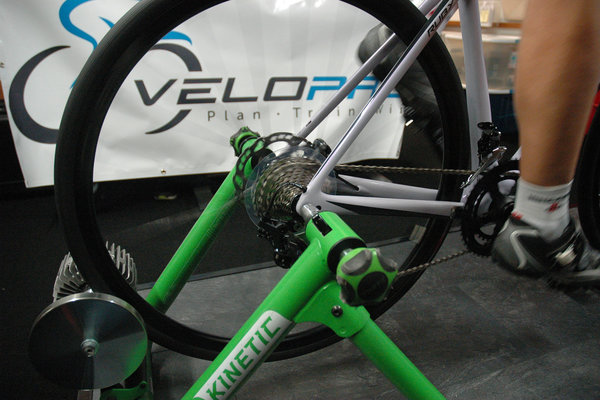
Most of us love to ride outdoors. There’s nothing better than speeding through the countryside feeling the wind on your face, tackling a challenging hill and carving through the descent that follows. A smart trainer and a box fan just can’t compete with nature. However, there are times when riding and training indoors is the best solution. Riding indoors gives you the ultimate control of your environment and safety. Here are the top reasons to ride indoors:
No matter your reason for training indoors, it is super easy to convert any VeloPro workout into an indoor Zwift or smart trainer session. With just a click, you can download your workout in .ZWI or .ERG file format. So, when you can't get out there, you can still get inside and ride!
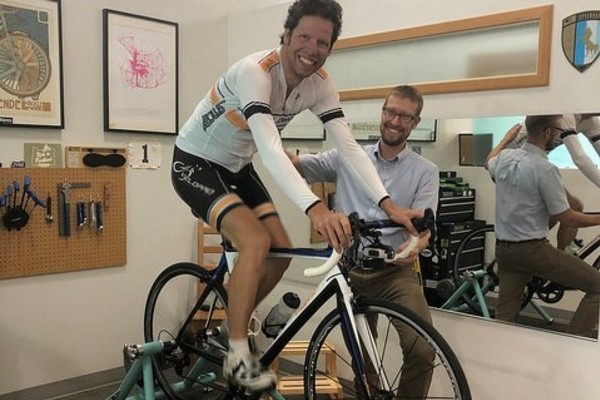
Poor bike fit is a big barrier to efficiency and a major cause of repetitive stress injuries. A great bike fit is a perfect meld of rider and machine. When your bike is optimized for your body mechanics, you feel comfortable in the saddle. You have more power and can ride longer. Most importantly, you have less knee, hip, back and shoulder pain. If you ride or train more than once a week you should seriously consider investing in a fit. Experienced riders know that millimeters can make a world of difference in comfort and performance.
Bike fitting is a combination of science and hard earned experience. A bike fit can cost anywhere from $150 to $400. Many bike shops offer fit services and there are several bike fitting "systems" that have passionate advocates. However, the best way to find a bike fit expert in your area is ask for recommendations from other riders. The top names will rise to the top. The only way to ensure that bike fit changes actually help is to ride. Look for an expert that will guarantee their work and make free adjustments for a few months after the initial fitting. If you have multiple bikes, you can ask your fitter replicate your setup from your primary bike to your other rides for an additional cost. Also remember, our bodies change over time, so if it's been a few years since your setup or if you get a new bike, revisit that fit.
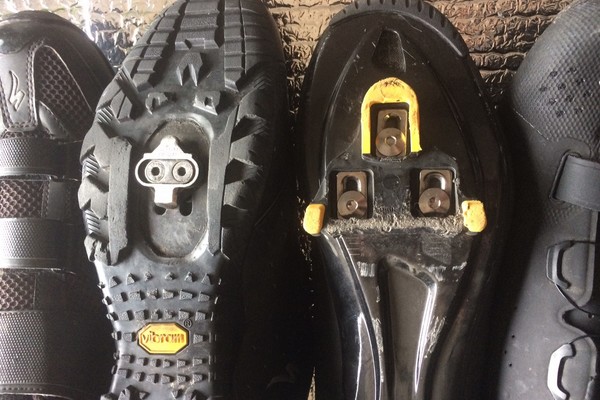
They're under your shoes and easy to forget, but breaking a cleat mid-ride can be a painful reminder! Loose cleats can completely change your float and pedaling dynamics, causing knee or ankle pain and loss of power. A cleat that sticks while unclipping can cause an embarrassing zero speed fall. No matter what cleat you use, SPD, SPD-SL, Speedplay, Look, or TIME, you should check them at least once a week. If you notice a tension change when clipping or unclipping this could be caused by a worn cleat or by one that is coming loose from the shoe. Make sure the bolts are tight. Look for cracks and breaks. Always replace worn cleats as soon as soon as possible. It is a good practice to keep a new set of replacement cleats on hand, so you are always ready to ride.